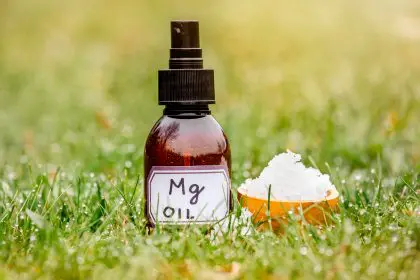Your skin doesn’t get the memo when you move from blasting heat in January to cranking air conditioning in July. While you’re switching your wardrobe and adjusting your thermostat, your skin is frantically trying to adapt to completely different environmental conditions without any help from you.
Using the same skincare routine year-round is like wearing the same outfit regardless of weather. It might work sometimes, but you’re probably going to be uncomfortable most of the time. Your skin’s needs change dramatically with humidity levels, temperature fluctuations, and sun exposure, which means your skincare routine needs to be just as adaptable as your closet.
Winter skincare survival mode
Winter turns your skin into a moisture-desperate organism fighting against indoor heating, cold winds, and humidity levels that would make a desert jealous. The air becomes so dry that it literally pulls moisture out of your skin, leaving you with tightness, flaking, and irritation that no amount of regular moisturizer seems to fix.
This is when you need to switch to heavy-duty hydration mode. Your lightweight summer moisturizer needs to be replaced with something much richer, possibly with ingredients like ceramides, hyaluronic acid, or even facial oils. Many people also need to reduce how often they use active ingredients like retinol or acids because winter-stressed skin becomes more sensitive.
The key is creating a barrier that locks moisture in and keeps harsh environmental factors out. This might mean adding a facial oil over your moisturizer, using a humidifier in your bedroom, or switching to a gentler cleanser that doesn’t strip your skin’s natural protective oils.
Spring skin reset and renewal
Spring is like skincare boot camp after months of winter survival mode. Your skin is probably dealing with dullness from lack of sun exposure, possible breakouts from heavy winter products, and the confusion of fluctuating temperatures and humidity levels.
This is the perfect time to gradually introduce exfoliation back into your routine if you scaled back during winter. Your skin can handle more active ingredients now, and gentle exfoliation helps remove the buildup of dead skin cells that accumulated during the dry winter months.
Spring is also when you should start thinking about sun protection again. You might have gotten away with minimal SPF during the dark winter months, but as the days get longer and you spend more time outdoors, consistent sunscreen use becomes crucial again.
Summer heat and humidity management
Summer skincare is all about managing excess oil, sweat, and intense sun exposure while dealing with air conditioning that can actually dry out your skin indoors. Your skin might produce more oil in response to heat and humidity, but then get confused by the dry indoor environments you escape to.
This season calls for lighter, gel-based moisturizers that won’t feel heavy in humid weather. You might need to wash your face more frequently or use blotting papers to manage oil production throughout the day. Sunscreen becomes non-negotiable and might need to be reapplied multiple times if you’re spending extended time outdoors.
Some people find they can handle stronger active ingredients in summer because their skin isn’t as dry and sensitive as it is in winter. However, certain ingredients like retinol can make your skin more sun-sensitive, so timing and sun protection become even more important.
Fall preparation and transition
Fall is your skin’s chance to recover from summer sun exposure while preparing for the harsh winter ahead. This transitional season is perfect for addressing any sun damage, hyperpigmentation, or texture issues that developed during the summer months.
You can gradually start incorporating richer moisturizers and more intensive treatments as the air becomes drier. This is also an excellent time for professional treatments or stronger at-home treatments because you’re not dealing with intense sun exposure that could interfere with healing.
Reading your skin’s seasonal signals
Your skin will tell you what it needs if you pay attention to the signals. Tightness and flaking usually mean you need more moisture. Excess oil and breakouts might indicate you need lighter products or better oil control. Sensitivity and irritation often mean you need to simplify your routine and focus on gentle, soothing ingredients.
The transition strategy
Don’t switch your entire routine overnight when seasons change. Gradually introduce new products while phasing out others to give your skin time to adjust. Keep a few versatile products that work year-round, then add seasonal boosters as needed.
Your skin is constantly adapting to environmental changes, and your skincare routine should be just as flexible and responsive.












